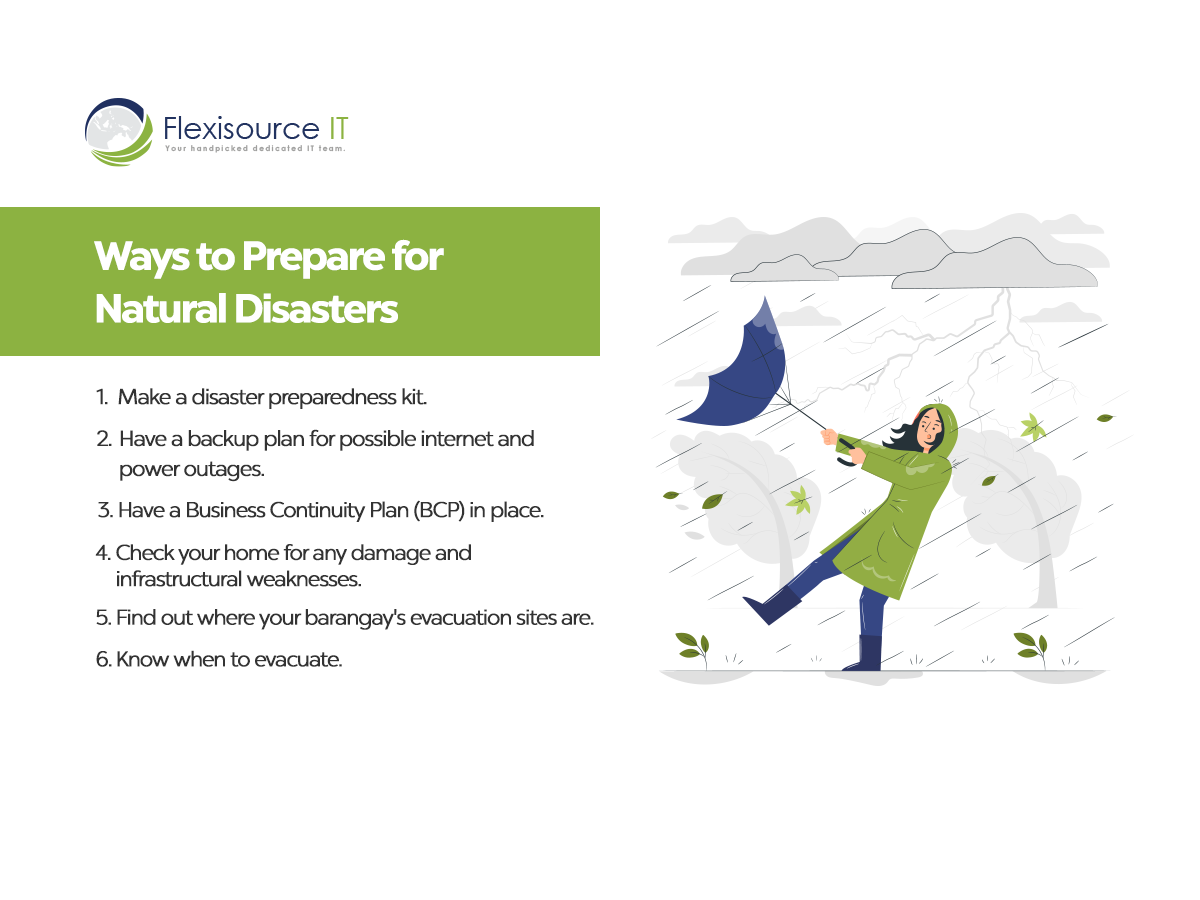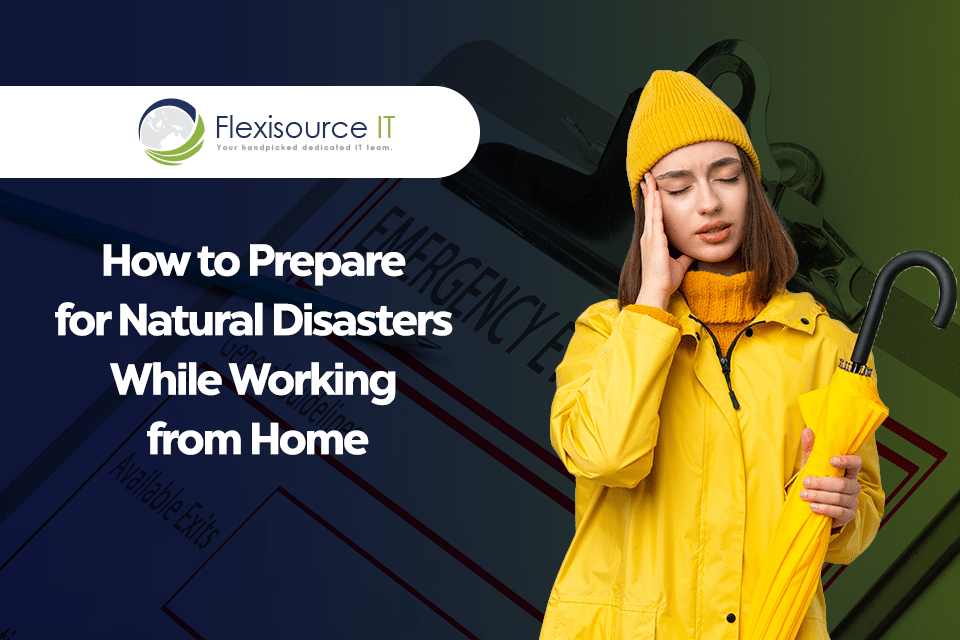The Philippines is prone to typhoons, floods, and storms due to its location in the typhoon belt, proximity to the Pacific Ocean, and mountainous terrain.
The coronavirus pandemic has made it especially hard for the Philippines to get ready for natural disasters. No one knows for sure when natural disasters will occur, but if you are working from home, you can take some steps to prepare yourself.
When a storm or typhoon hits, you may need to take action to protect yourself and your property. Here are some tips on how to prepare for natural disasters while working from home.
Make a disaster preparedness kit
Disasters can happen at any time, so it’s important to be prepared. One way to do this is by creating a disaster preparedness kit. This kit should include items that will help you stay safe and comfortable if a disaster strikes.
There are many things to consider when putting together a disaster preparedness kit. The first thing to think about is the type of disaster you are preparing for. Some disasters, like storms and floods, require different items than other disasters, like fires or earthquakes.
Once you know what type of disaster you are preparing for, you can start assembling your kit. Some essential items include water, food, flashlights, batteries, and first-aid supplies. It’s also important to have extra clothes and blankets in case you have to evacuate your home.
Make sure to pack your kit in a sturdy container that can be easily transported.
Have a backup plan for possible internet and power outages
Storms can cause power and internet outages that can last for days. We rely on the internet to work from home, monitor weather updates and connect with authorities. That’s why it’s crucial for you to have a backup plan in place.
One option is to have an alternate way to access the internet, such as through mobile data or broadband. Additionally, make sure you have a plan for charging your devices in case of an outage. If you have any emergency supplies, such as a flashlight or battery-powered radio, make sure they are easily accessible in case of an outage.
A backup plan for internet and power outages doesn’t have to be complicated. Here are a few ideas:
- Charge your devices ahead of time. If you have a generator, make sure it’s fueled up and ready to go.
- Keep some cash on hand. ATMs might not be working during an outage.
- Have a list of emergency phone numbers handy. This includes your utility company, local police department, and family members.
Have a business continuity plan in place
Every business should have a business continuity plan (BCP) in place, especially in the Philippines. No matter the disaster, if you don’t have a plan in place, not only will your business suffer, but your employees as well.
When a severe storm hits, businesses can be greatly affected. Employees may not be able to get to work, and customers may not be able to reach the business. This can lead to a loss in revenue and increased expenses.
A BCP is a document that outlines how your company will continue operations during and after a disaster. It includes things like contact information for employees, what work needs to be done, and how you will communicate with customers and vendors.
The business continuity plan should include information on how the business will operate if it is unable to open its doors due to a storm. The plan should also include alternate locations for the business if necessary.
Business owners should review their continuity plans regularly and update them as needed. In addition, businesses should practice using their plans so that they are prepared in the event of a real storm.
If your company doesn’t have a BCP, now is the time to create one. The process of creating a BCP can be daunting, but there are plenty of resources available to help you get started. The most important thing is to start planning now and not wait until disaster strikes.

Check your home for any damage and infrastructural weaknesses
It’s important to take some preventative steps to protect your home. One of these is inspecting the structural integrity of your house. Look for any damage that could be caused by high winds, floods, or earthquakes. If there is any damage, you’ll need to take steps to repair it before the disaster hits.
Even if your home doesn’t appear to have any damage, it’s still important to have it inspected by a professional. A professional will be able to identify any potential problems and suggest ways to fix them. You may also need to get a permit from your local government in order to make repairs.
If you live in an area that’s prone to natural disasters, it’s a good idea to have a plan in place for what you’ll do if your home is damaged.
Find out where your barangay’s evacuation sites are
It is important for you to be aware of the designated evacuation sites in your community in case of a calamity. Residents should also be familiar with the routes they need to take to get to these evacuation sites.
In the event of a calamity, it is important for all residents to heed the warnings of the authorities and evacuate to these designated sites immediately.
Know when to evacuate
When a storm is bearing down on your area, it’s important to know when to evacuate. Flooding and high winds can both cause dangerous conditions, so it’s essential to know what to look for and when it’s time to go.
It is important to monitor weather updates from reputable sources to stay safe during severe storms. By staying informed, you can make decisions about whether to take shelter or evacuate when necessary.
If you live in an area that is prone to flooding, be sure to keep an eye on the weather reports and heed any warnings about flash flooding. If there is a risk of your home becoming flooded, evacuate before it’s too late.
The Bottom Line
Being prepared for typhoons, storms, and floods while working from home is important. Having an emergency plan in place can help you stay safe and minimize the amount of damage done to your home. Make sure to stock up on supplies, such as food, water, and medical supplies, and keep a charged phone on hand so you can stay updated on the latest weather reports.







